Technology Areas/Product Groups
Optical Fiber
IoT(Internet of Things)の進化を支える情報通信インフラの実現には、既存の伝送容量限界を超える光通信網の確立が必要不可欠です。そのなかで光ファイバは中心的な役割を果たします。NTTが提唱するIOWN構想では、「低消費電力」「大容量・高品質」「低遅延」という3つの目標性能を掲げ、さまざまな新技術の導入が検討されています。
IOWN構想の実現に向けたフジクラの取り組みとして、独自技術である12心間欠固定型光ファイバリボン「Spider Web Ribbon®」を実装した、世界最高密度の多心光ファイバケーブルをリリースしています。さらにこの技術を進化させて、標準的な被覆外径よりも細い200 µmの光ファイバを実装した超多心光ファイバケーブルの開発を進めています。
また、さらなる高密度化を実現するための研究開発として、1本の光ファイバクラッドに複数のコアを配置するというマルチコアファイバの開発を進めています。マルチコアファイバの早期実用化を見据えて、現在使用されている標準の光ファイバと同じ細さ(125 µm)で、かつ既存のシングルモードファイバと光学的に互換な4つのコアを配置したマルチコアファイバを中心に研究開発を進めています。


Optical Connector
光コネクタは、光ファイバどうしを精密に軸合わせし、端面を近接または接触させて低損失・高信頼の繰り返し接続を実現する製品です。単心コネクタおよび多心一括コネクタ(図1)に適用され、それぞれに複数の接続方式があります。フジクラは各接続方式におけるコア技術を有しており、お客様の用途に応じた多様なソリューションを提供しています。PC接続は、光ファイバ端面どうしを物理的に接触させる方式です。フジクラは、高精度研磨技術や精密樹脂成形技術などを活用し、光コネクタの低損失化と多心化を進めてきました。また、PC接続に加えて、屈折率整合材や光ファイバ融着接続機を組み合わせた現場組立型光コネクタソリューション(図2)も提供しています。近年、ハイパースケールデータセンター(HSDC)におけるデータトラフィック量の増大にともない、光コネクタや光配線ソリューションの高密度化が注目されています。この課題の解決策として、フジクラは、小型かつ高密度なキーコンポーネントであるMMCフェルール・コネクタ(図3)および配線ソリューションを、この新分野に展開しています。加えて、80 μmクラッド光ファイバ対応製品の開発を進めており、さらなる小型・高密度化を実現します。また、よりいっそうの高密度化を実現するため、1本のファイバに複数のコアを有するマルチコアファイバをアセンブルした多心光コネクタ、MCF-MPOコネクタ(図4)の開発にも取り組んでいます。
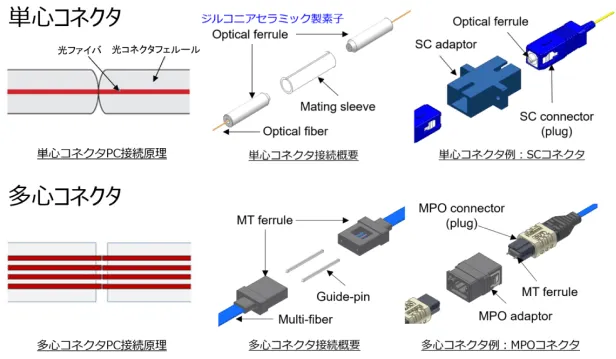
図1:単心コネクタおよび多心一括コネクタ

Figure 2: Examples of field-assembled connectors (Left: fusion-type MPO connector, Right: refractive index-matched single-fiber connector)
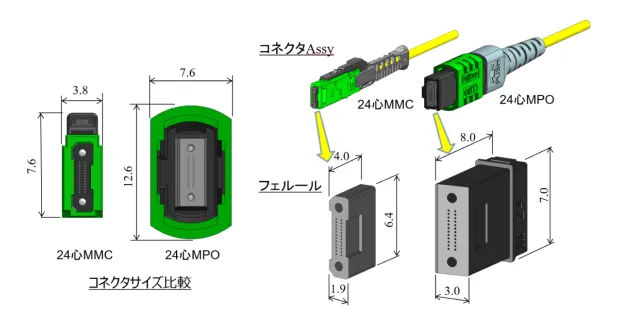
Figure 3: MMC vs MPO connector comparison

Figure 4: Multicore fiber (left) and MCF-MPO connector (right)
Fusion Splicer
フジクラでは、光ファイバの被覆除去、切断、融着接続を行う光ファイバ融着接続機の研究開発に取り組んでいます。この装置は、光ファイバのコア位置を高精度に測定し、精密軸合わせ機構により2本の光ファイバをサブミクロンレベルで調心します。その後、準コロナ放電またはCO2レーザを用いて融着接続を行います。タングステンの電極を用いた準コロナ放電方式の光ファイバ融着接続機は、小型化が可能で主に通信用光ファイバの接続に使用されます。一方、CO2レーザを用いた光ファイバ融着接続機は、光ファイバにタングステンが付着しないため、主に特殊光ファイバの加工に使用されます。このCO2レーザは、接続だけでなく先端レンズ加工や光結合器の製作でもその特性が活用されています。メカトロニクス技術を駆使したこの装置は、世界トップシェアの地位を築いています。
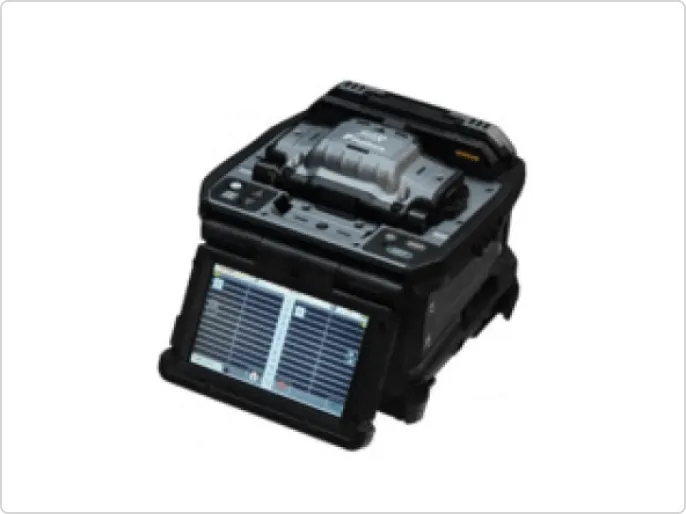
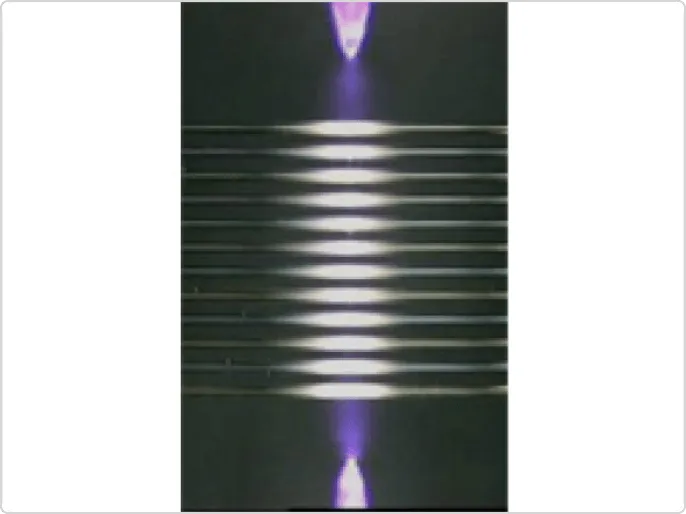
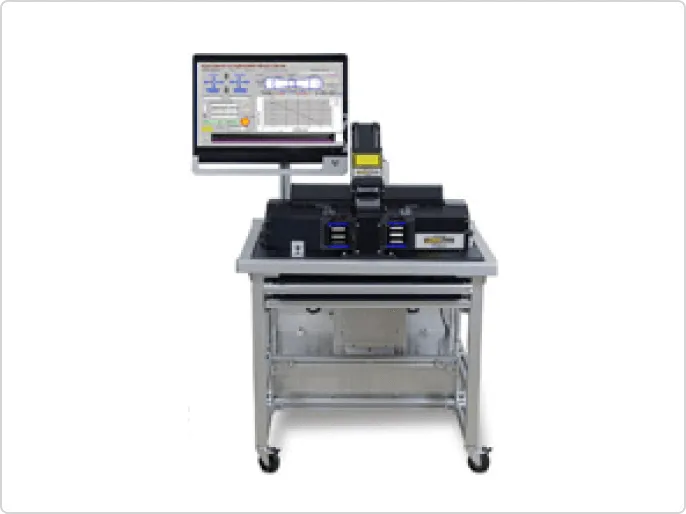
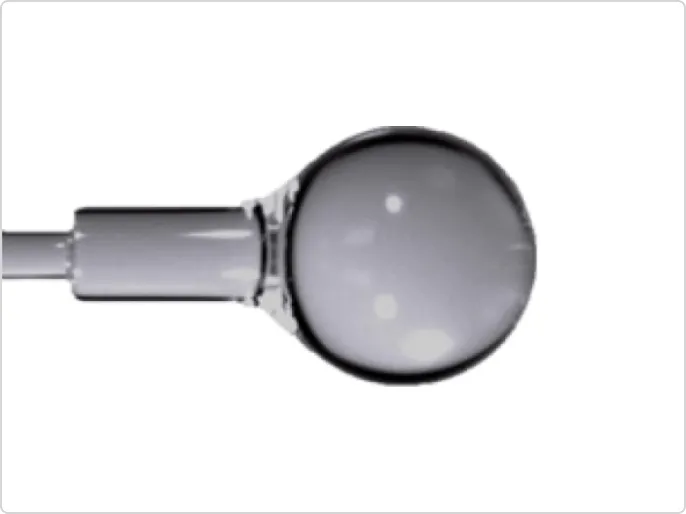
高密度光ファイバケーブル
- ①既存の布設工法のままで、既設管路への布設心数の増加
- ②SWR®を用いたリボンの一括融着接続による接続時間の短縮
- ③屋外から構内にいたる、一気通貫での布設による接続点の減少
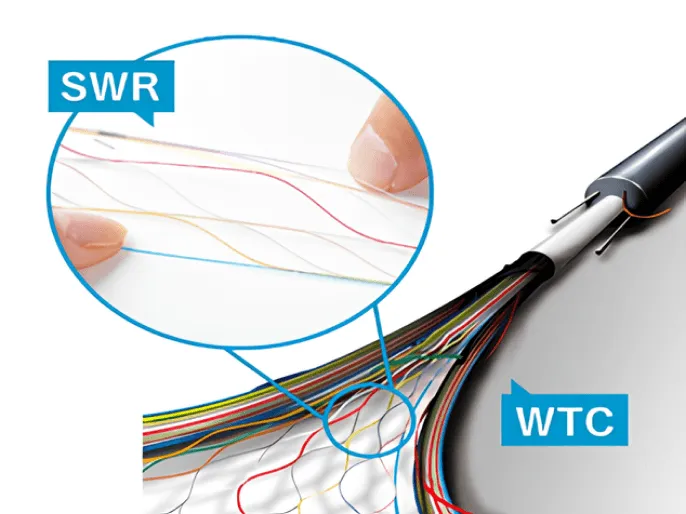

超細径高密度型WTC®

空気圧送型WTC®(AB-WTC™)
Ultra-fine coaxials
Micro Coaxial Cable Assembly
近年、極細同軸ケーブルはモバイル機器やウェアラブル機器、ドローンなど、さまざまな用途で用いられ、非常に限られたスペース内で、高屈曲・捻回特性を有した接続や、さらに細径で、ノイズに強く、高速な信号を伝送するニーズがあります。
そこで、ケーブル内部構造の改良などにより、これらのニーズにこたえる、機器内配線用極細同軸ケーブルおよびアセンブリの開発を進めています。
下の写真は、高屈曲極細同軸ケーブルの例です。中心導体の材質と構成を変更することで、従来のケーブルと比べて10倍以上の屈曲性能を実現しました。このケーブルは、必要な屈曲性能に合わせて設計・製造することができます。
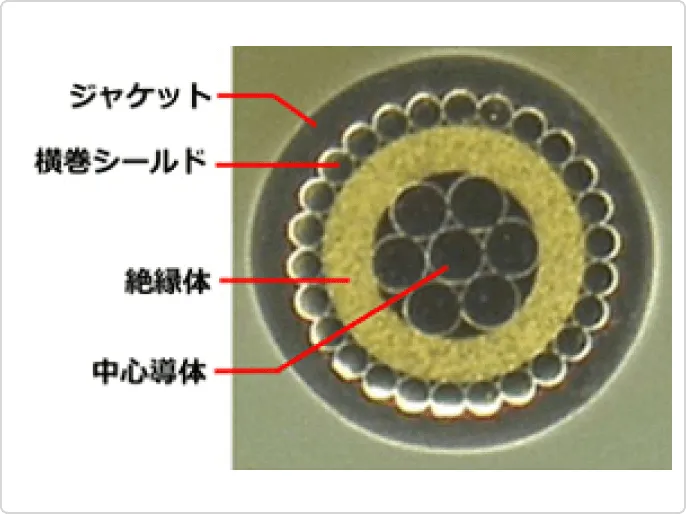
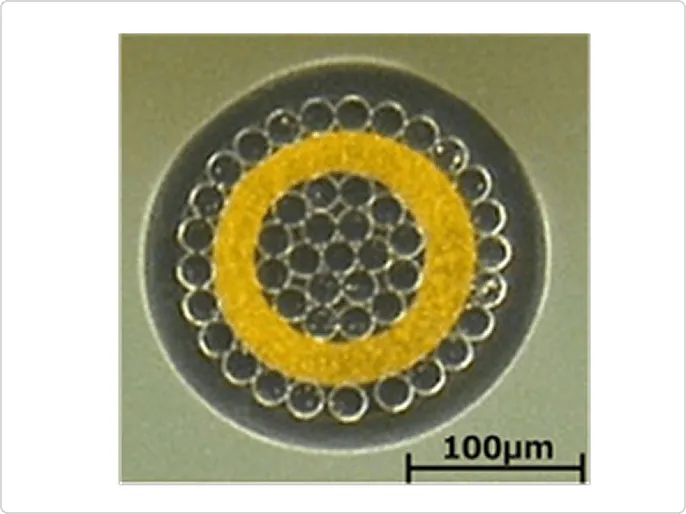
Sensors
Pressure Sensors
圧力センサは、その名のとおり気体の圧力を計測するためのセンサです。圧力スイッチなどの産業機器、血圧計などの医療機器、そして民生品といった幅広い分野で使用されています。
現在、フジクラでは、ピエゾ抵抗型圧力センサと信号処理ICを組み合わせた高精度な圧力センサの開発技術を生かし、高い出力安定性と精度向上を実現しています。
圧力レンジは微圧領域の2 kPaから高圧領域の1 MPaまで、出力はアナログ出力とデジタル出力(I2CTM、SPI)に対応し、さまざまなパッケージ形状を取り揃えています。
電子機器の小型化・薄型化に貢献できるよう、2024年には4×4 mmの小型圧力センサ(AT7)をリリースしました。
今後さらに多様化する市場のニーズにこたえるため、製品ラインナップを強化してまいります。
Oxygen Sensors
酸素センサは、酸素濃度を計測するためのセンサです。酸素濃縮器やインキュベータなどの医療機器、窒素発生装置などの産業機器といった幅広い分野で使用されています。
酸素センサは、高温で酸素イオン伝導性を有するジルコニア固体電解質を用いた限界電流方式です。フジクラが保有するセラミック成形技術、パッケージング技術、組み立て・測定技術などを生かし、高精度な酸素センサを製造してまいります。



Millimeter Wave
動画配信やVR/ARを活用した各種アプリケーションを高品質に提供するため、第5世代移動通信システム(5G)の導入が進んでいます。5Gは、モバイルネットワークをさらに高速かつ大容量化し、高信頼・超低遅延通信や多数の同時接続を可能にします。これらの特徴により、日常生活の利便性向上だけでなく、産業や社会の効率化など、新たな付加価値を創出するインフラとなっています。
高速・大容量化や低遅延通信を実現する技術として、5Gでは新たにミリ波(おおむね30 GHz以上の電波)が導入されました。ミリ波はきわめて広い帯域幅を有し、画期的な高速通信などが実現できます。しかし、従来一般的に用いられているマイクロ波(数GHz以下)と比較して、さまざまな要因で減衰や劣化が起こりやすいため、通信機器に使用する各種デバイスの材料や設計・製造には、これまでとは全く異なる発想と高度な技術が必要です。フジクラは、ミリ波帯通信デバイスの高性能化と低コスト化に向けた研究開発を進めています。60 GHz帯において、フェーズド・アレイ・アンテナと信号処理部を統合した60 GHzミリ波無線通信モジュールを開発し、世界トップクラスの通信速度(1 Gbps以上)と長距離伝送(500 m以上)を同時に実現しました(当社実験環境における実力値の例であり、周囲の環境によって異なります)。さらに、28 GHz帯において、高周波IC(RF-IC)や、RF-IC/フェーズド・アレイ・アンテナ/電源回路を含む周辺機能を統合した、FutureAccess™ Type-Cシリーズの28 GHzミリ波アンテナボードを開発し、5G基地局への適用を目指しています。また、バンドパスフィルタなどのミリ波帯の低損失・高機能デバイスの開発も進めており、新世代のミリ波通信デバイスを総合的にサポートします。

60 GHz millimeter wave wireless communication module

28 GHz mmWave Antenna Board

